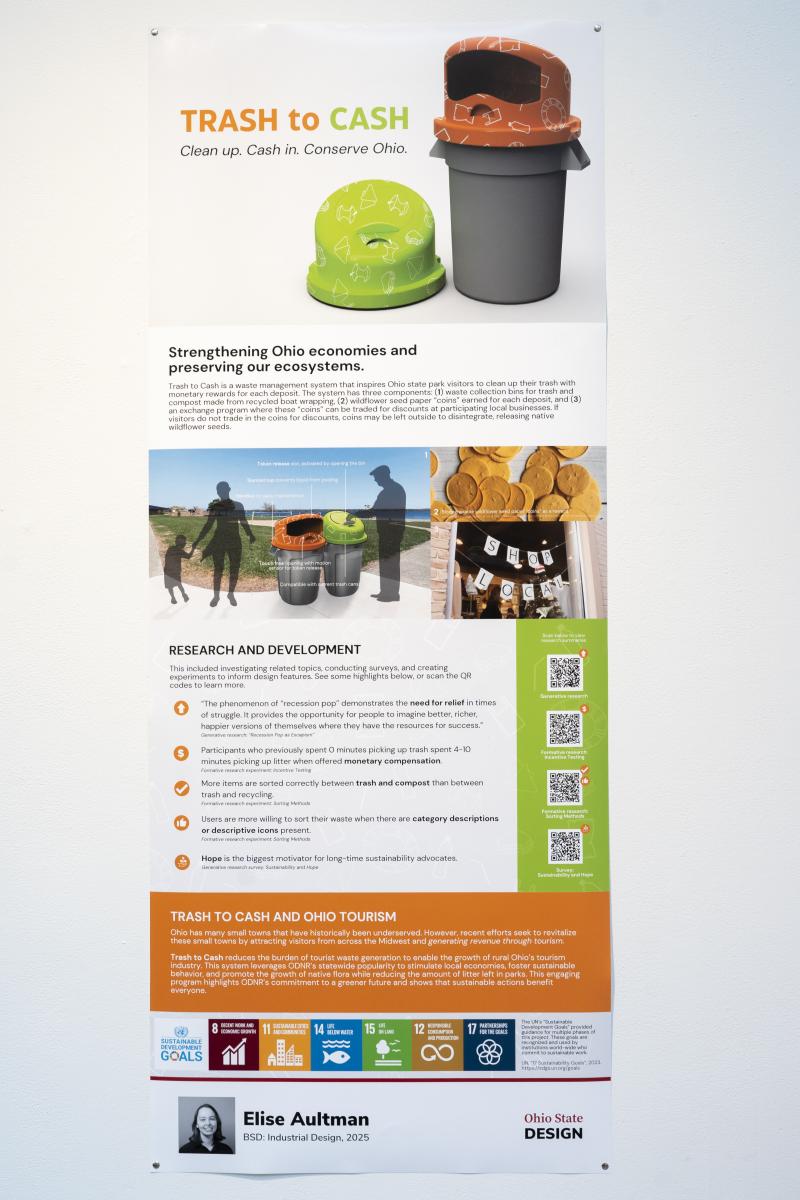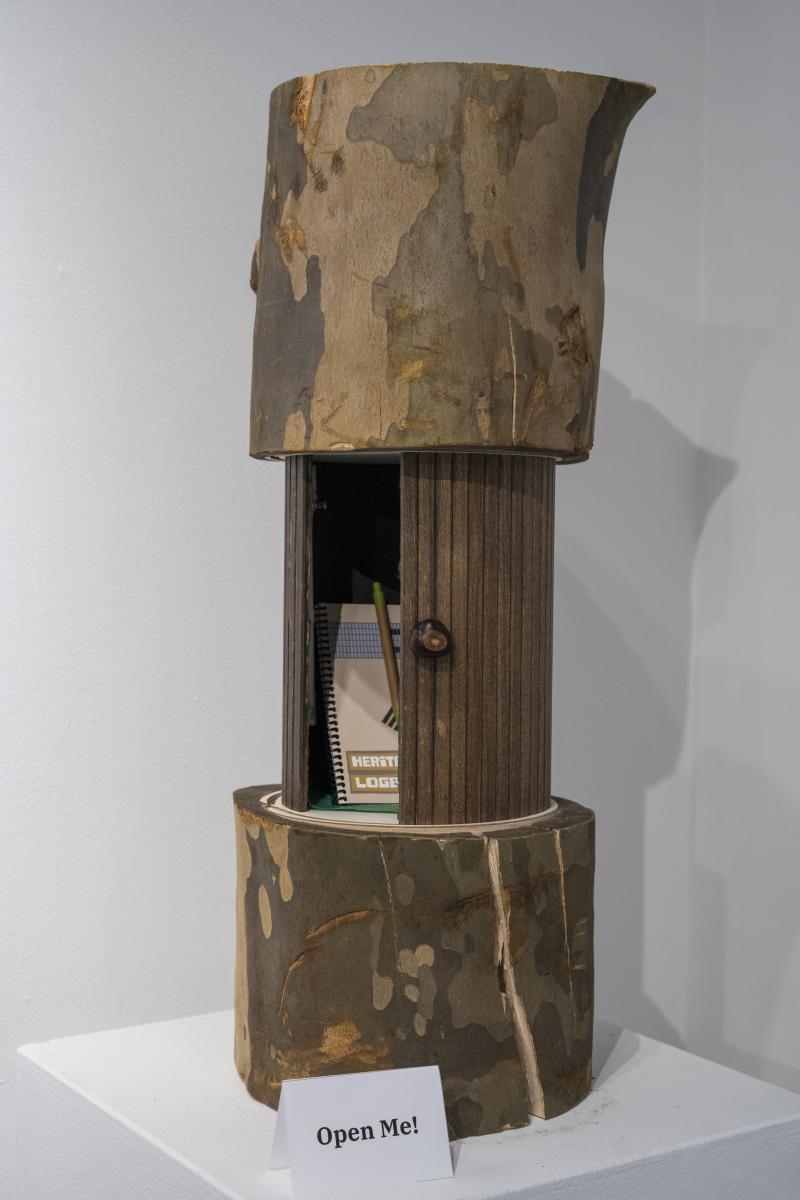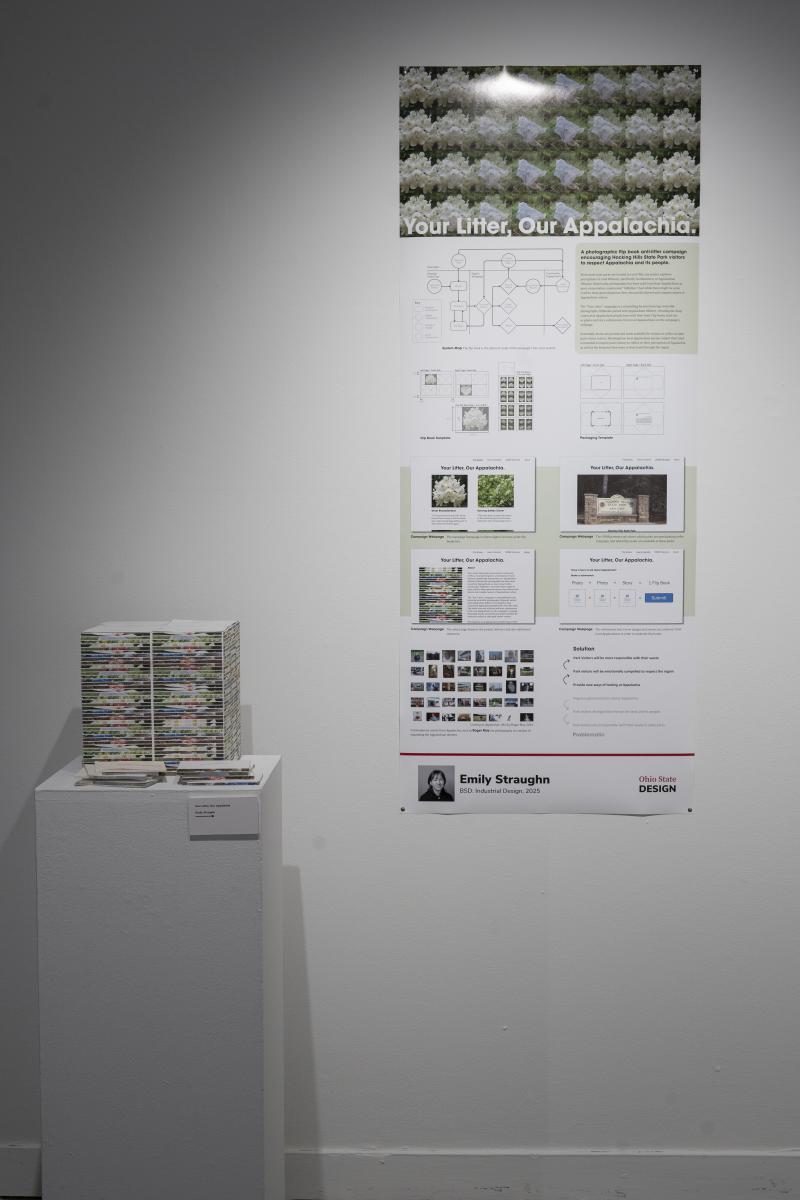Design Is Resistance

Design is inherently political through its unique ability to change the social, cultural, economic, and structural systems of our lives, so why do we limit the job of a designer to something purely aesthetic or surface-level?
Everything outside of nature on Earth is designed by humans. We are the masterminds behind the creation of our societies from things as little as a water bottle to roads to the development of capitalism. We, as people, have the choice to design our lives and cultures, and the senior Industrial Design students from The Ohio State University have chosen to acknowledge and embody this responsibility of resisting and challenging our societies through design. Through their senior capstone projects in the Spring 2025 show at Urban Arts Space, Design in Flux, they challenged societal cultures ranging from sustainability to financial wellbeing to disability justice.

Elise Aultman, a student working with the Ohio Department of Natural Resources (ODNR), focused on promoting sustainable practices by creating a system for compost and waste education through trash can lids, connecting this to a broader reward system meant to motivate people and build local Ohio economies. Emily Straughn, Dedié Adissem, and Erin Shaw—other students working with ODNR—respectively created a series of flipbooks to raise awareness about littering and Appalachian stereotypes, developed educational experiences surrounding Indigenous knowledge, and designed a playground revolving around sustainability education.

Other students worked with Huntington National Bank to improve the financial wellbeing of people in different communities. Kayanaat Chaudhry focused on bridging the gap between banking services and Black, Indigenous, and people of color in local neighborhoods. Mark Boyd redesigned how banks could support student athletes in their Name, Image, and Likeness (NIL) deals. Sharon Longdong developed a system of accessible and digital financial advising, while Peter Maczuzak worked to streamline and develop budgeting tools through the concept of the economy of subscriptions. John-Paul Kuepper created a game called Finnigan’s Finances to encourage different forms of financial education.

Other students within the program worked with companies like Battelle and Honda to redefine what medical devices and cars can function as, redesigning experiences within those respective areas of life.
The senior Industrial Design class from The Ohio State University were able to leverage design and turn it into a tool for social change. As designers, these students embodied the responsibility of design acting as a discipline surrounding social, cultural, and economic development. Within this context, the role of design in our daily lives is continuously shifting to be in flux.


